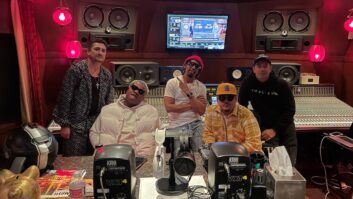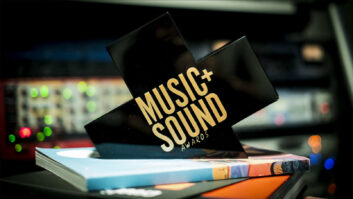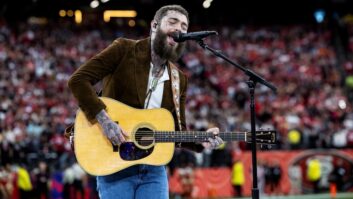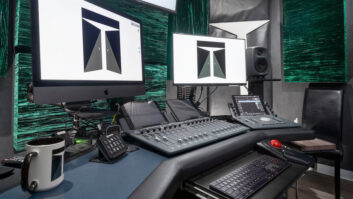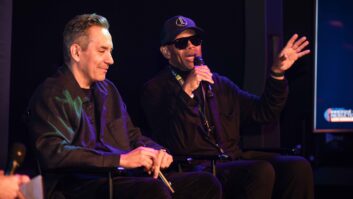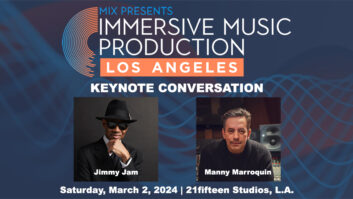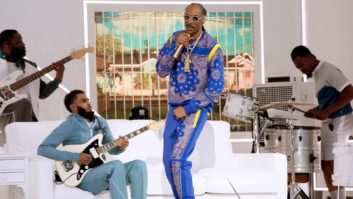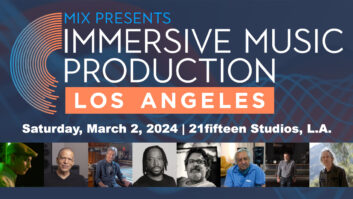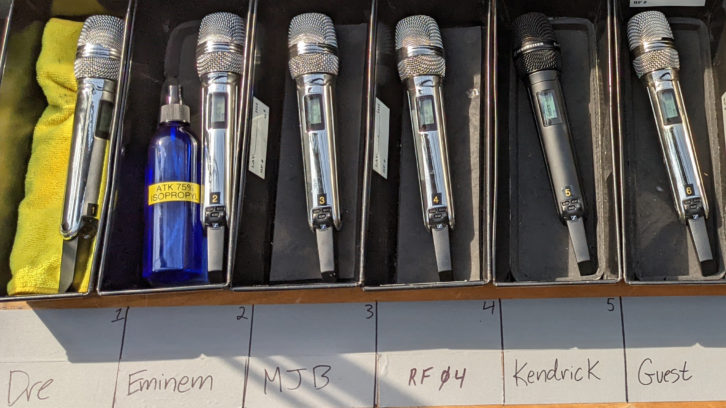
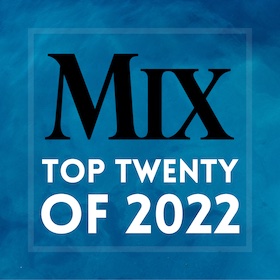 This was Mix’s 16th most-read article of 2022!
This was Mix’s 16th most-read article of 2022!
The Super Bowl LVI halftime show was one for the record books. This year, for the first time ever, every performer was a hip-hop artist.
And, in a first for the broadcast audio, the halftime show—featuring Dr. Dre, Snoop Dogg, Mary J. Blige, Eminem, 50 Cent and Kendrick Lamar—was not mixed in a remote truck onsite, but from a control room at the National Football League’s new West Coast media center.
On the subject of firsts, this was not the first time that the Los Angeles Rams made it to the Super Bowl (that was 1979), but it was the debut of the team’s new home venue, SoFi Stadium, as a host of the NFL championship game. The 70,000-seat stadium, which opened in September 2020 and is also home to the Los Angeles Chargers football team, sits in Hollywood Park, a 298-acre mixed-use development, the brainchild of L.A. Rams owner/chairman and property developer E. Stanley Kroenke.
NFL Los Angeles, the league’s new 450,000-square-foot West Coast headquarters, is located right next door to SoFi Stadium. Home to NFL Network, NFL.com, NFL RedZone and the NFL app, it features nearly 75,000 square feet of production space, including five TV studios and associated control rooms, a podcast studio and a voiceover booth.
The facility, which also houses 18 edit rooms, two audio sweetening studios and 90 desktop editors, is tied together with 258 miles of Cat6 cable (Ethernet), according to the NFL, as well as 45,000 feet of fiber. In total, the organization reports, its networks support 18,000 Dante and 16,000 MADI connections, plus 2,048 channels of Riedel intercom.
MIXING MUSIC ON AN SSL
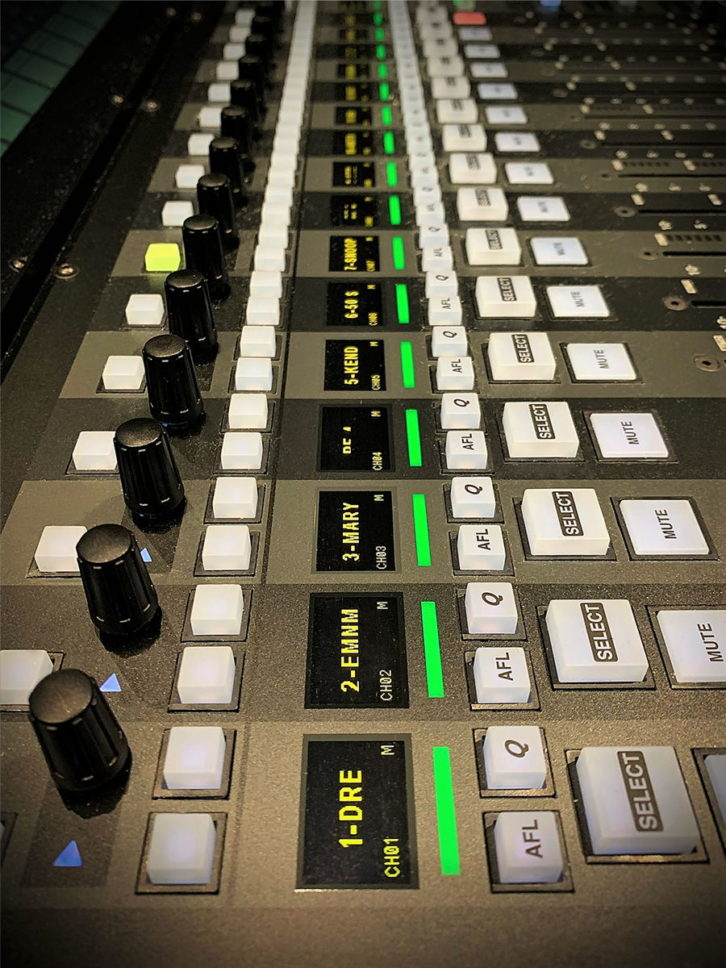
New York-based A1 Tom Holmes, who has been the broadcast production mixer on the Grammy Awards telecast for many years, was working his second Super Bowl. “I got the call in the middle of January asking if I was available,” he says, “so I got added to the show late.” Holmes mixed not only the halftime music, but also the pregame presentations of “The Star Spangled Banner,” by country music artist Mickey Guyton, and “America the Beautiful,” by R&B artist Jhen Aiko.
Each of the NFL facility’s five studio control rooms are outfitted with a Solid State Logic System T S500 console, with a companion S300 surface for redundancy or expansion. This was the first time in a decade that Holmes had mixed on an SSL, he says: “I found the console sounded really good. It certainly is laid out well and has nice features built into it, like bus compression and effects. The compression was very nice and smooth. Same with the EQ—it has all the features you need out of an EQ.”
He didn’t have much time to get acquainted with every feature of the console, he admits, not least because of the busy schedule. Not knowing what was available on the console or in the room, he says, “I said, ‘Get me a TC System 6000 reverb and I’ll be set.’”
American football games are generally not televised in Dolby Atmos—yet. That said, the NFL appears to be prepared for wider adoption of ATSC 3.0’s next-gen audio capabilities. “Every audio control room has a 7.1.4 set of Genelec speakers,” Holmes reveals. “Each control room has two SSL consoles, and each one of those also has two Genelec pre-fade speakers. The edit suites also have 5.1 Genelec systems. There are so many Genelecs in that building.”
MICS, WIRELESS, DANTE
A total of 16 RF microphones and 12 crowd mics were sent to Holmes’ console from the field at halftime, where ATK Versacom once again provided live sound production for the halftime music extravaganza. NBC also made a 5.1 stem available from the stadium, he says.
Gary Trenda, lead RF technician for Professional Wireless Systems, and his team handled wireless audio—microphones and IEMs—for the entirety of Super Bowl LVI, including the pregame and halftime show, as well as on-field referee microphones and production crew comms.
For the pregame anthems, Guyon and Aiko both used Shure ADX2FD transmitters with KSM9 mic capsules, making the most of PWS’s Axient Digital wireless and Quadversity antenna setup.
Snoop Dogg was the only halftime artist using a Shure mic, a custom gold-plated ADX2 transmitter with a KSM9 capsule. The five other performers opted for Sennheiser SKM 6000 transmitters with MD 9235 capsules from the company’s Digital 6000 wireless product line. Snoop Dogg wore Shure SE215 Sound-Isolating in-ear monitors, while the others used Shure PSM 1000 IEMs.
Nashville Hip-Hop’s D.I.Y. DNA
In total, Holmes had access to 256 lines back and forth between his control room and the stadium. There were also 192 lines between the studio and the NFL’s router, he says, for access to the transmission and videotape record paths. In case of a catastrophic failure, the live front-of- house mix in the stadium was available at the router as a backup.
In SoFi Stadium, ATK deployed dozens of Dante-networked Focusrite RedNet interfaces for the halftime production, which is typically rolled out and set up during the tightly timed six- to seven-minute break at the end of the second quarter. In his control room, Holmes says, signals were mainly interfaced via RedNet D64R bridge devices. “We couldn’t take anything that was Dante native and put it right into the wall. It had to go through a MADI-to-Dante converter,” he says.
REHEARSALS, TIMING, GAME ON!
In another first for the halftime production, Pro Tools operator Pablo Munguia, another Grammy show veteran, joined Holmes in the control room instead of working on-site. Rather than having to page Munguia on the intercom, Holmes says, “I could just turn around and ask him to play it again.”
Rehearsals of the entire halftime production, including the timed stage set and P.A. load-in, setup and breakdown, began with the talent on the Monday before Super Bowl Sunday, with two or three passes per day, he says. Thursday was dark, then there were two more run-throughs on Friday, the last before the show went live-to-air.
On the first rehearsal day, Holmes recalls, Dr. Dre asked for ATK’s P.A. to be turned up. “Snoop Dogg is not a loud guy; he’s conversational-level. I had a super-hard time getting any clarity out of Snoop’s mic after Dre had everything turned up.” Happily, the artists had representatives in the control room and, soon enough, he says, “It went back to a much more manageable level.”
Holmes favors a phantom center channel when mixing in 5.1, to withstand accidental mispatching in the downstream broadcast path. Plus, affiliates typically want their broadcasts to be in surround, so programming with information only in the left and right channels is automatically upmixed, he says. “So I always try to keep enough information in the center and surrounds—like crowd and reverb tails— to keep it out of another station’s upmixer.”
Monday morning quarterbacking of the Super Bowl halftime show has become a national sport, but if anyone thought the vocals were too quiet, well, there was a good reason for it. “The guys in the booth with me were saying, ‘You’ve got to turn these vocals down; we don’t want them to stand out like a sore thumb. They want them ‘in the pocket,’ as they say. So for this event,” Holmes says, “I was trying to make the clients happy.”
